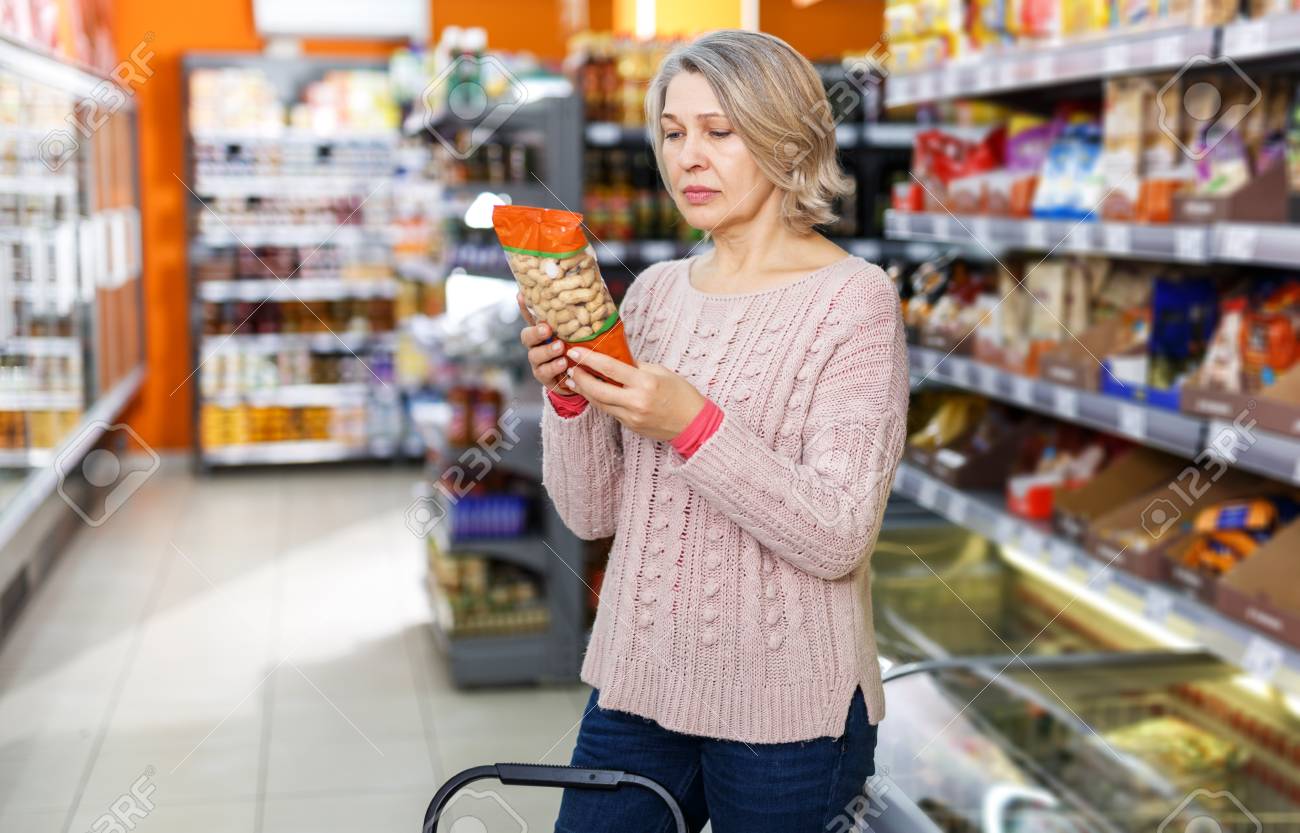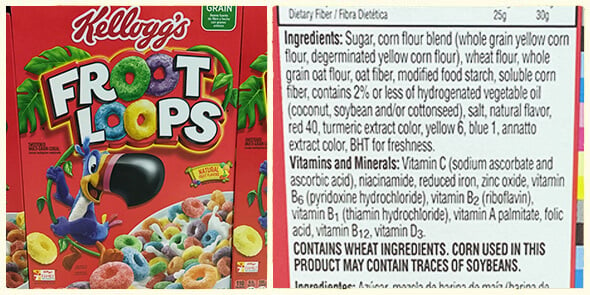Food labels — Don’t let them trick you
Are you often confused by food labels? Do you look for foods labeled as whole-grain, all-natural or healthy? Do you read the front of the label when you’re making a decision to buy or not?
Reading labels
Food manufacturers are very tricky when it comes to front-of-the-label packaging. They’re experts in marketing products to appear ‘healthy’ when, in fact, they are often far less wholesome than they really are. Here are some of the most commonly used, and deceptive tricks of the food and restaurant trade. Don’t let them fool you!

Natural
In your quest to find foods that nourish, do you seek out foods labeled “100 Percent Natural,” “Healthy,” or “No Artificial Ingredients?” The USDA defines “natural” as not containing artificial ingredients, coloring ingredients or chemical preservatives, and, in the case of meat and poultry, is minimally processed. A double negative if I’ve ever heard one.
‘Natural’ could be the most meaningless word on your food labels.
‘Natural’ doesn’t mean the animal isn’t raised on a factory farm and doesn’t mean that the animal has access to the outdoors. ‘Natural’ is, as Consumer Reports writes, “a deceptive marketing ploy to reel in unaware consumers.”
‘Natural’ does not mean organic.

Food labeling: often misleading!
Slap a label on a can of iced tea that reads “100% Natural Tea” — would you be surprised to find the ingredients include filtered water, high fructose corn syrup, and lemon-flavoring? That’s not natural to me. If it’s sweetened with ‘organic sugar’ or “real honey’ it’s still just sugar, in terms of added calories.
Hormel, the mega meat producer, markets ‘Natural Choice’ brand meats, which, although not containing ‘lab-crafted’ nitrate-heavy preservatives, still are preserved with nitrates, they’re just from celery juice. As reported in Modern Farmer, some studies have found that nitrate levels are higher in ‘natural’ products than not.
CR bought some products labeled ‘natural’ to check out the ingredients. For example, Del Monte Fruit Naturals contain artificial preservatives potassium sorbate and sodium benzoate, which are made from industrial chemicals. Kraft Natural Cheese contains cellulose powder and the antifungal natamycin, used as an antifungal and a pesticide. Read more examples here.
CR surveyed shoppers — the majority consider ‘natural’ to mean that no chemicals were used in the processing of the food, that it contains no artificial colors or ingredients, and no toxic pesticides. Not true. Most shoppers would pay more for ‘natural’ foods. And they do.
The best breads: whole wheat; multi-grain; stone-ground? First, what is the definition of a whole grain?
The Oldways Whole Grain Council, a nonprofit consumer advocacy group working to increase consumption of whole grains for better health, writes,
Whole grains or foods made from them contain all the essential parts and naturally-occurring nutrients of the entire grain seed in their original proportions. If the grain has been processed (e.g., cracked, crushed, rolled, extruded, and/or cooked), the food product should deliver the same rich balance of nutrients that are found in the original grain seed.
This definition means that 100% of the original kernel – all of the bran, germ, and endosperm – must be present to qualify as a whole grain.
Included are grains such as amaranth, barley, corn, oats, and wheat. Click here for more examples of whole grains, and detailed information on each.
From bread to crackers to hot and cold cereals, “multi-grain” does not necessarily mean whole grain — it only means that the product contains an undefined amount of different types of grains. What if the label reads, ‘Made with whole grain flour’? Not so fast. This could mean that the bread is made from white flour with some wheat germ and bran added back in. What about ‘stone-ground flour’? Nope – all that means is that the grain has been passed through a stone mill at least once during the manufacturing process.
What about “enriched” bread? ‘Enriched’ merely means the maker of the bread has added nutrients to an otherwise nutrient-free white bread. Enriched means refined flour with synthetic nutrients added to replenish those natural nutrients lost in the milling process. If all you can find is white bread, then yes, enriched is better, but…
If you want whole wheat bread, buy bread whose first ingredient is 100% whole wheat and then choose the packaged bread with as few ingredients as possible, certainly avoid brands with high fructose corn syrup or added sugars.

Remember, there is no fruit in ‘Froot Loops’
“Free” foods:
Foods labeled “low-fat” or “fat-free” are not calorie-free. Manufacturers add sugar to restore texture and bulk lost when the recipe lacks fat. A “sugar-free” cookie may have a similar calorie count as the regular cookie… maybe more!
Healthy or not?
Seemingly healthy foods such as yogurt and oatmeal may contain copious amounts of added sugars. Packaged bread and crackers typically contain palm oil or trans fat, flavors, and preservatives.
‘Miracle’ juices and ‘energy’ bars, touted as healthful, are usually just vehicles for added sugars and excessive calories.
Consider these surprisingly unhealthy foods:
 Yogurt
Yogurt
Made from cow’s, sheep, or goat milk, yogurt is a gut-friendly food due to its healthy bacteria, a good source of calcium, vitamin D, magnesium and protein, but watch out! Today’s yogurt aisles resemble the dessert aisle – with tons of sugar and even candy. Yogurt should have but two ingredients: milk and live cultures.
Tortilla and taco shells
Typically made from corn or wheat flour, or both, read the ingredient label — some are high in fat, often made with palm oil or worse, trans fat Trans fat can raise bad cholesterol and lower good cholesterol. Buy 100% whole-wheat tortilla and taco shells made with canola or other vegetable oils. Watch for added colors, flavors, and preservatives – the shorter the ingredient list, the better.
Oatmeal
Whole oats are a deliciously healthy cereal, but when it comes to packaged cereals, it’s like yogurt — always read the ingredient label first, especially on ‘instant’ or ‘quick’ oats. Some of the “maple” or other flavors of instant oatmeal have more than 12 grams per serving — that’s three teaspoons of sugar per serving.
Granola
There are dozens of brands of ‘natural’ granola on the cereal aisle shelves, but by its definition, granolas are calorie-dense, full of oil and sugar. A much better choice is muesli, a raw mix of whole grains and seeds and oats.
‘Miracle’ juices; ‘energy’ foods
The front of the juice package appeals to your quest for good health with buzzwords like ‘promotes immunity’ and ‘antioxidants’ and photos of fresh fruit. Unlike whole fruit, juice is a very quick way to get excess calories. Eat whole fruit for more energy and fiber – there’s no evidence that ‘juicing’ will ‘cure’ any disease.
And what about ‘energy’ bars and drinks? In all of my presentations about healthy eating and avoiding fad diets I ask the same question, “What is another word for ‘energy?’”
Calories! A calorie is a unit used to measure energy, so if you see something labeled ‘full of energy’ just know, it’s full of calories, or caffeine, or both. Most commercial ‘energy’ or ‘nutrition’ bars are more akin to candy bars than nutritious snacks. Read the ingredient label and ignore marketing claims. The first ingredient is usually refined flour, and sugar in a myriad of guises, including corn syrup, molasses, honey and more. For sustainable energy, grab a cup of 100-calorie unsweetened yogurt and stir in some muesli or chopped nuts. Energy drinks are typically full of sugar and caffeine and sometimes amino acids that are purported to ‘boost’ your energy. There are so many ingredients in energy drinks — which may make them more likely to produce negative and even deadly side effects as opposed to beverages containing just caffeine alone. Read more from the Caffeine Informer here.

Consumers need to be aware of how much caffeine is in a drink or product and parents need to know exactly what their children are drinking and talk to them about what is safe
What’s your least favorite, most egregious food marketing claim? Let us know in the comments section below.
____________________________
Food, Nutrition, and Your Health columnist Susan Burke March moved to Cuenca after 35 years as a Registered and Licensed Dietitian and Certified Diabetes Educator in the United States. She currently serves as the Country Representative from Ecuador for the Academy of Nutrition and Dietetics.
Susan helps people attain better weight and health, and reduce the risk of heart disease, diabetes, and other conditions that can be improved with smart lifestyle modifications. Contact her at SusantheDietitian@gmail.com.





















